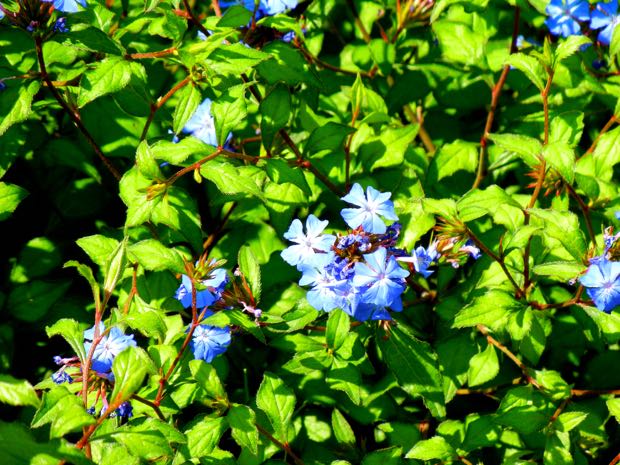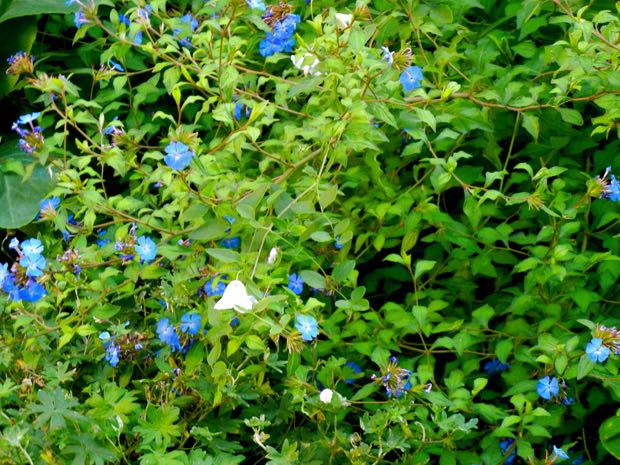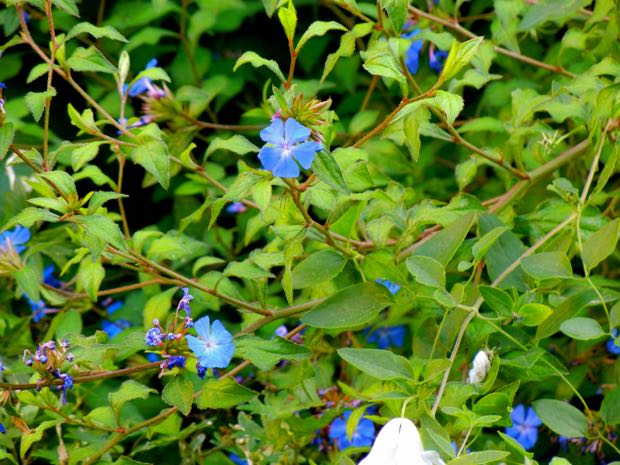Ceratostigma willmottianum: Chinese Plumbago or Hardy Plumbago
Description: Ceratostigma willmottianum, commonly known as Chinese Leadwort, Chinese Plumbago, or Hardy Plumbago, belongs to the Plumbaginaceae family of plants. It is a small deciduous shrub native to China and Tibet. Chinese Plumbago features bright blue flowers that bloom in summer and fall. The leaves of Ceratostigma willmottianum turn reddish in the autumn or fall season. The plant can grow up to 1m or 3ft tall.
Chinese leadwort (Ceratostigma willmottianum), originally named by the Scottish botanist John Lindley in 1834, pays homage to the significant contributions of Ellen Ann Willmott, an esteemed English gardener and plant collector. Revered as a trailblazer in horticulture, Willmott played a pivotal role in introducing Chinese flora to the Western world. Her extensive writings and captivating lectures on gardening helped popularize Chinese plants and their cultivation practices not only in the United Kingdom but also across borders.
Ellen Ann Willmott’s groundbreaking work went beyond mere botanical exploration. As an avid gardener, she meticulously curated her own impressive collection of plants, including many rare and exotic specimens from China. Through her efforts, these enchanting botanical treasures found their way into British gardens, enriching the horticultural landscape and captivating the imaginations of gardening enthusiasts.
Today, the enduring legacy of Ellen Ann Willmott continues to thrive as her namesake, Ceratostigma willmottianum, blooms with its striking blue flowers. This Chinese Leadwort stands as a testament to her passion for botanical discovery and her invaluable role in bridging cultures through the love of plants.
Cultivation of Ceratostigma willmottianum:
Sunlight and Soil: Chinese Plumbago can be planted in full sun or partial shade. It thrives in moist, well-drained soil. If your soil is heavy or clay-like, you can improve drainage by amending it with sand or compost.
Watering: Ceratostigma willmottianum is drought-tolerant once established, but it should be watered regularly during the first year after planting. Water deeply and less frequently, allowing the soil to dry out slightly between waterings.
Fertilization: Chinese Plumbago does not require frequent fertilization. However, a light application of balanced fertilizer in the spring can help promote flowering. Use a balanced fertilizer, such as 10-10-10, and apply it at a rate of 1 pound per 100 square feet.
Pests and Diseases: Ceratostigma willmottianum is relatively pest- and disease-free. However, it can be susceptible to pests like aphids, as well as diseases like powdery mildew and spider mites. If you notice any pests or diseases, treat them immediately with appropriate pesticides or fungicides.
Deadheading: Deadheading spent flowers of Chinese Plumbago encourages the plant to produce more flowers. Simply pinch off the spent flower heads with your fingers.
Pruning: Ceratostigma willmottianum does not require frequent pruning. However, you may choose to prune it in the fall to shape the plant and remove any dead, diseased, or damaged branches.
Winter Protection:
In colder climates, Ceratostigma willmottianum may require protection from the cold. Mulch around the plant with 2-3 inches of organic matter, such as bark chips or straw. You can also consider covering the plant with a frost blanket if temperatures are expected to drop below 25 degrees Fahrenheit.
Propagation: Chinese Plumbago can be propagated by seed or division. The division is the preferred method as seed germination can be erratic. To divide the plant, simply dig it up in the fall or spring and divide it into smaller clumps. Plant the divided clumps 6-8 inches apart.
By following these cultivation guidelines, you can enjoy the beautiful blue flowers and autumn foliage of Ceratostigma willmottianum in your garden.







